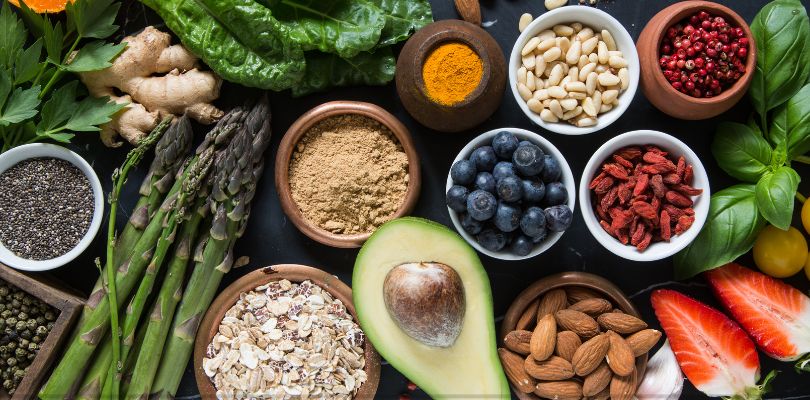Follow a Healthy, Balanced Diet
Hemophilia is a rare genetic blood disorder that occurs when blood doesn’t clot and makes bleeding slow down or stop altogether. If you have hemophilia, maintaining a balanced diet that supports overall health and helps manage symptoms is essential. We'll look at foods to eat as well as treatment options, such as Hemlibra, that helps the blood coagulating process.
10 Foods to Eat with Hemophilia
While no specific foods can cure hemophilia, certain foods can contribute to better blood clotting, bone health and overall well-being. Here are some recommended foods to include in a hemophilia diet:
1. Leafy Green Vegetables
Leafy greens like kale, spinach, Swiss chard and broccoli are great options for people with hemophilia. They are rich in vitamin K, which plays a crucial role in blood clotting.
2. Lean Proteins
Chicken, turkey, fish, eggs, tofu and legumes are examples of lean proteins that can help build and repair tissues. This is important for healing and maintaining muscle mass.
3. Whole Grains
Whole grains such as brown rice, oats, quinoa and whole wheat bread provide fiber, which supports digestive health and helps maintain stable blood sugar levels.
4. Calcium-Rich Foods
Dairy products like milk, yogurt and cheese are calcium-rich and great for people with hemophilia. Calcium is essential for strong bones, which is important because people with hemophilia are at a higher risk of bone density loss.
5. Fruits and Vegetables
Berries, oranges, apples, carrots and bell peppers are high in vitamins, antioxidants and fiber, which help with overall immune function and wound healing.
6. Iron-Rich Foods
Red meat, beans, lentils, fortified cereals and spinach are high in iron. Iron supports the production of hemoglobin, which is crucial for oxygen transport in the blood. However, make sure to consume red meat in moderation.
7. Omega-3 Fatty Acids
Omega-3 fatty acids contain anti-inflammatory properties that help manage pain and support cardiovascular health. Examples include fatty fish (salmon, mackerel), flaxseeds, walnuts and chia seeds.
8. Vitamin C-Rich Foods
Vitamin C aids in iron absorption and supports healthy blood vessels. Foods such as citrus fruits, strawberries, bell peppers and tomatoes are high in vitamin C.
9. Water
Staying well-hydrated is essential for all humans, but particularly for people with hemophilia, as it helps maintain healthy blood flow and reduces the risk of clots forming improperly. Drink lots of water, herbal teas and coconut water.
10. Healthy Fats
Healthy fats such as olive oil, avocados, nuts and seeds help support overall cardiovascular health and provide essential fatty acids.
Treatment Options for Hemophilia
Treatment options for hemophilia focus on preventing and managing bleeding episodes, improving quality of life and reducing complications. Here are the main treatment options for hemophilia:
Medications
Medications such as Hemlibra can be used to treat hemophilia. It works by preventing or reducing the frequency of bleeding episodes in people with hemophilia A. Hemophilia A is a genetic disorder where the blood does not clot properly due to a deficiency of Factor VIII, a protein essential for blood clotting.
Replacement Therapy
The most common treatment for hemophilia involves replacing the missing clotting factors to help the blood clot properly. This can be done through on-demand therapy which is administered during a bleeding episode to stop bleeding, or prophylactic therapy, which involves infusions to prevent bleeding episodes.
Desmopressin (DDAVP)
Desmopressin is a synthetic hormone used to treat mild hemophilia A. It stimulates the release of stored Factor VIII from the body’s tissues. It can be administered as an injection, nasal spray or intravenously.
Gene Therapy
Gene therapy is an emerging treatment that aims to correct the genetic defect causing hemophilia by introducing a functional copy of the clotting factor gene. Some studies suggest gene therapy could provide long-term relief by enabling the body to produce its own clotting factors.
